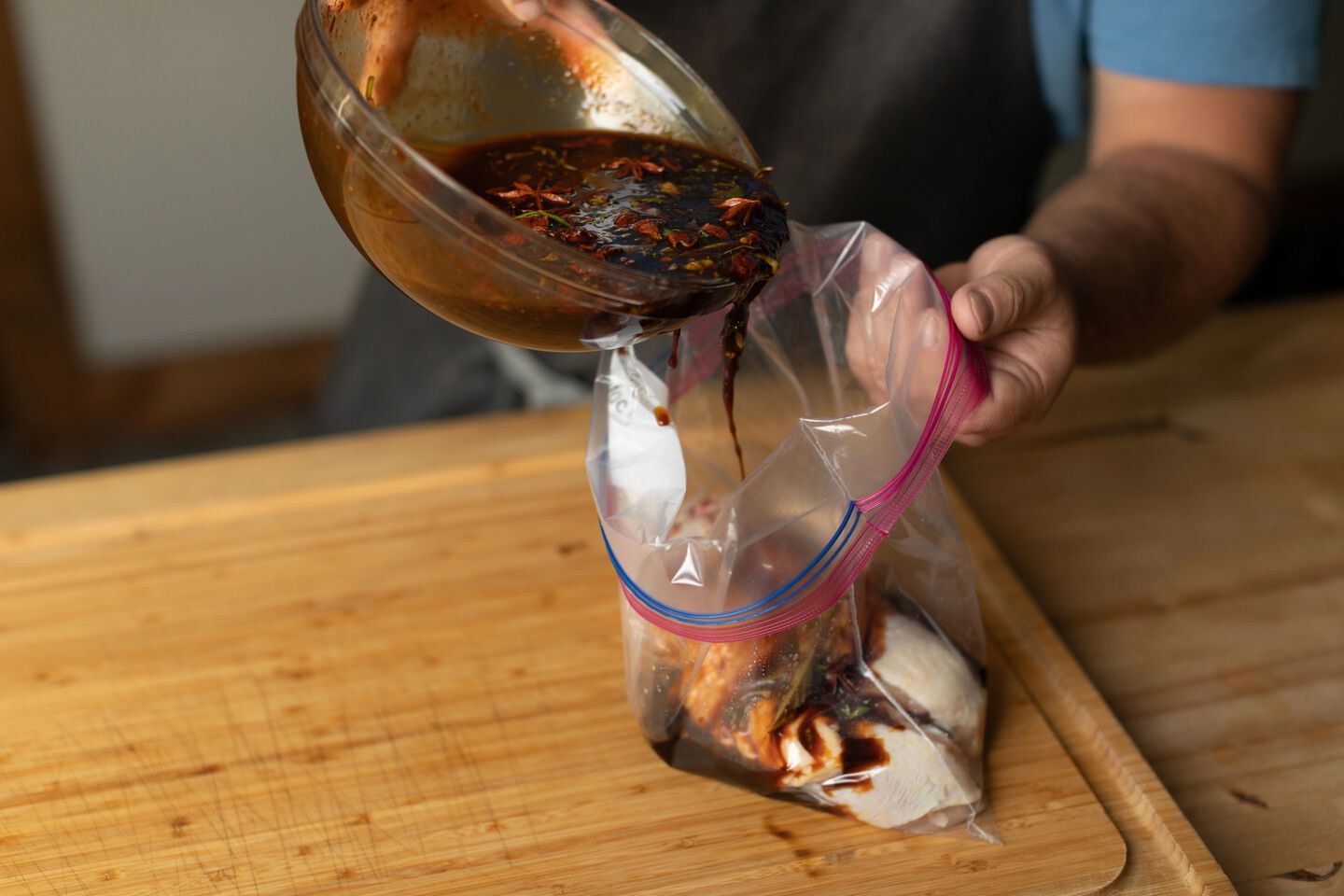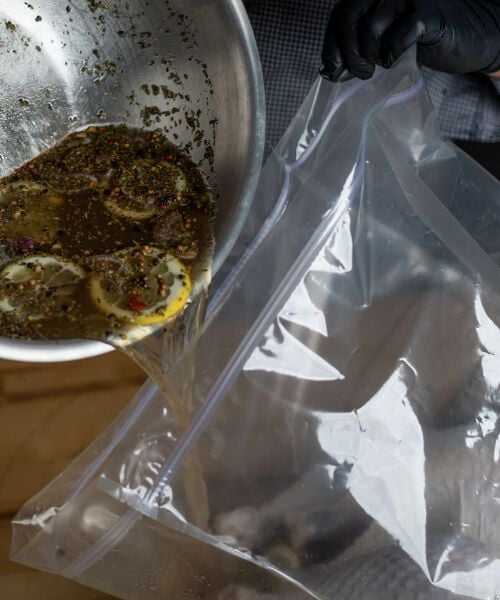Sugar and spice, everything nice? Any home or professional cook will tell you it's quite the opposite. In fact, seasonings are often the heart of our most coveted recipes. To the naked eye, they're a handful of dried up herbs and spices, but those ingredients are often played close to the chest. And for good reason! Seasonings, cooking styles, and ingredients offer outsiders an intimate look at your culinary inspiration. From your roots to your relationships, from your favorite food to your comfort food—whatever it may be we can all pledge our loyalty when someone shares their secret ingredient.
Join is on a deep dive into flavors. Rubs, sauces, marinades, glazes, brining, seasonings, injections, and more. Find it all here in the Book of Flavor.
Chapter Links
SEASONINGS

The inner workings of a bottle of seasoning are much more intricate than your regular run of the table salt and pepper shakers. Seasonings are made up of finely ground spices and herbs. They're used to enhance the natural flavors (and smells) of the dish or meat you are cooking. Add seasoning to combine two, rather opposite, dishes or create an entirely different flavor profile. You may opt for a light sprinkle or a generous application.
FOR USE: You may put them on before or after the cooking process and its often recommended you conduct taste tests (when possible) to ensure your ratio is correct.
RUBS
A rub is a mixture of spices and herbs, giving you a completely unique flavor of its own. BBQ Rubs are rubbed or gently pressed on the meat prior to the cook. Rubs are rarely used after cooking. Rubs are often made up of larger pieces of chopped herbs and spices to give you more coarse effect when compared to seasoning. These larger pieces of dried herbs and spices give their meats (like brisket or steaks) a fantastic bark.
FOR USE: Lightly brush your meat with your choice of cooking oil and liberally coat all sides with the rub mixture.

SAUCES
Sauce intensifies and adds flavor to your dishes. It's definitely not a must-have for every instance but it does come in handy with a few. When it comes to beef, sauces are usually served as side. Think horseradish sauce, au jus, extra BBQ wing dipping sauce, etc. In the case of chicken or ribs, sauce will go on your dish at the very end of its cooking process (if you'd like.) We recommend brushing it on during the last 10-15 minutes of grilling for a caramelized twist.
MARINADES

Similar to wet brining, marinating your meat is a popular method that adds flavor while tenderizing your protein choice. It's the process of adding seasonings to acidic liquids (wine, vinegar, lemon juice, etc.) and soaking your meat for en extended period of time. The acidic liquid tenderizes the meat by breaking down the connective tissues. (Please note that different cuts of meat may require more or less time during the soaking process. Be careful to not let them sit too long, some tender cuts might turn soft and mushy. Between 30 minutes and 3-4 hours is acceptable.
Choose what you marinade wisely, high end steaks may not make the most sense to marinade. Marinading is popular with beef and chicken.
FOR USE: Use a gallon Ziplock bag to add your meat and marinade to. Carefully close and set in a container or shallow dish incase of spillage. Place this in your refrigerator and let it sit.
GLAZES
Glazing and mopping is done after your meat (usually ham) has gone through the majority of the cooking process. By adding a sweep of homemade glaze you’ll add flavor and caramelization to your end presentation. Just like sauces, add your glaze towards the tail end of the cook (the last 10-20 minutes.) The exact time is situational depending on the temperature you are cooking at. 10 minutes if you’re cooking at higher temperatures and closer to 20 minutes if you’re cooking at lower temperatures. Be wary that if you leave it on too long it can over cook and ruin your meat.
Glazes tend to be on the sweet and tangy side to combat the already salt stricken cured ham. Popular glaze bases start with brown sugar or honey. Try our Apricot Glaze.

BRINING
Brining is most commonly attributed to poultry like chicken and turkey. But you can brine pork and fish as well. In short, brining is just another fancy word for adding flavor...similar to seasoning. Here's a little breakdown of the two.
DRY BRINING:
Dry brining is kind of like adding a rub to your meat. It consists of rubbing the salt and seasonings directly onto the meat and skin. Then letting it rest for an extended period of time. This process will typically take between 24-72 hours, 2-3 hours / pound.
Pro: Simple and requires less space than wet brining. The salt helps keep the bird moist and adds flavor.
Con: Requires more time when done right.
WET BRINING:
Wet brining consists of submerging your choice of meat in a bath of salt, spices, and water for an extended period of time. This process will typically take between 12-24 hours.
Pro: Infuses both flavor and moisture.
Con: Requires a large container for large cuts like turkey, or a durable brine bag which can take up more space in the refrigerator.
INJECTIONS

You can use an injector on all sorts of cuts of meat of a variety of categories. Think whole turkey and whole chicken, pigs, ham, pork shoulders, briskets and more. This process is done with an injector. The injector allows you to add flavor beyond your meat's surface. Commonly used liquids including beef broth, butter, alcohol, sodas, and even Worcestershire sauce.
INGREDIENTS
Transparency is key when picking out a seasoning or bottle. While many will have the ingredients listed on the bottle it also may take come searching. You'll want to look for as many natural ingredients as you can fid. Steer clear heavy metals and ingredients you cannot pronounce.














